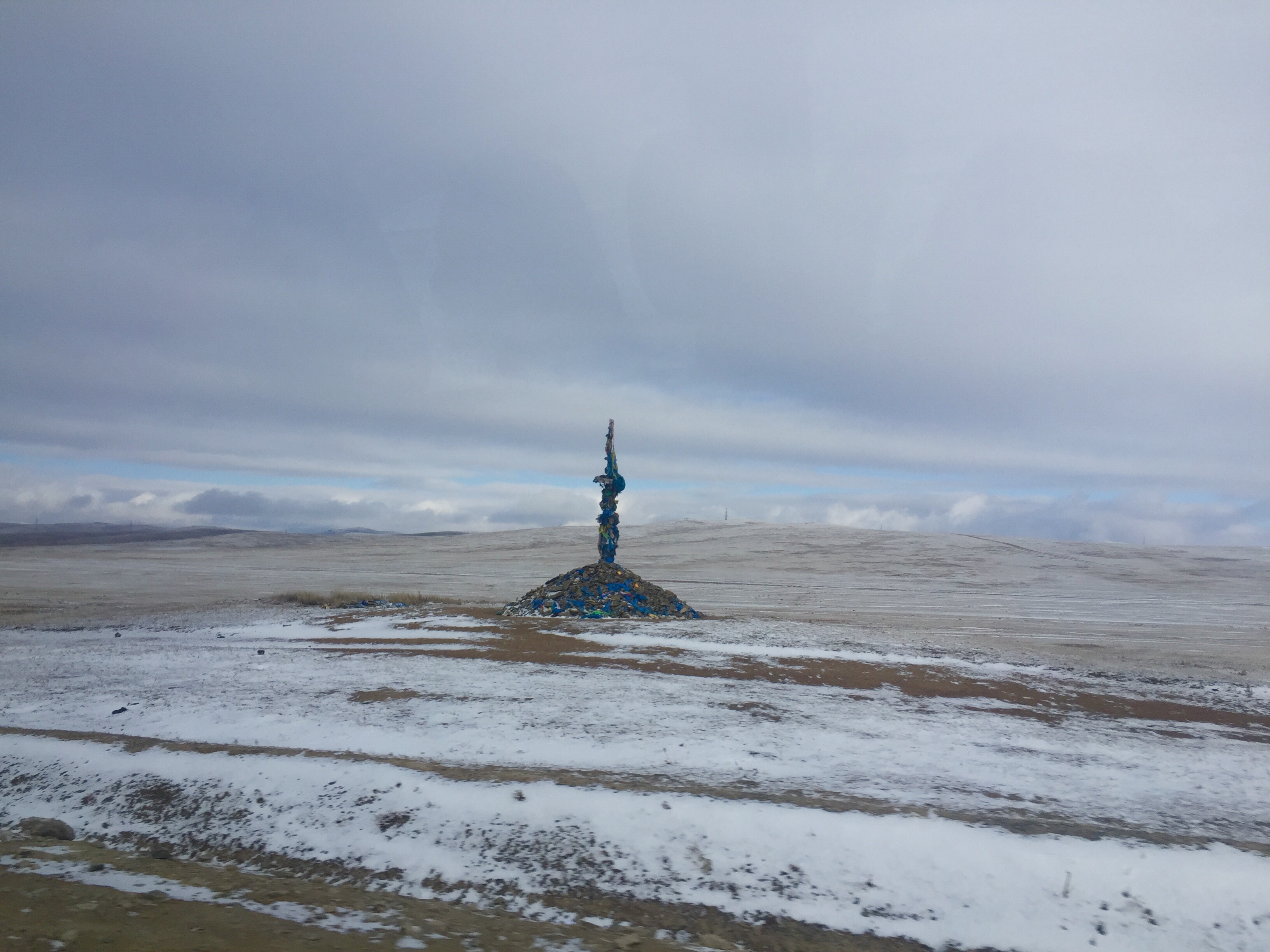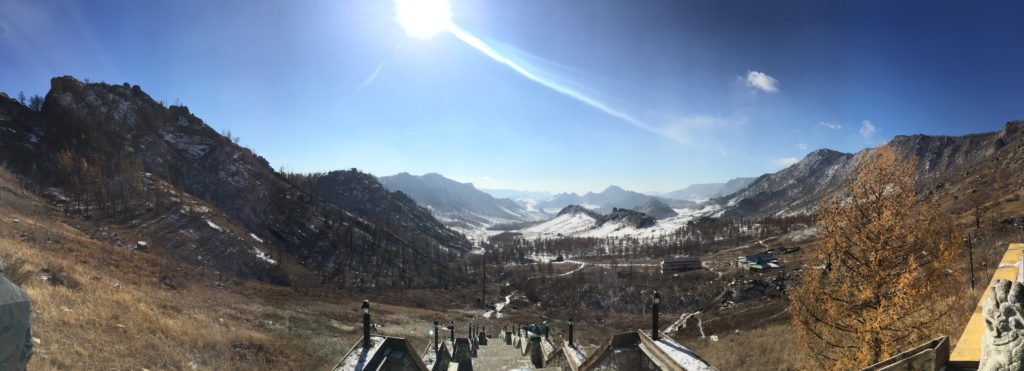Our travels through Mongolia gave us wonderful opportunities to experience and learn more about the three faiths that survived a cultural revolution and 68 years as a Soviet satellite state: shamanism, Buddhism and Islam.
Holy heavens
It felt like there is a little shamanism in many people, regardless of whether that is their primary belief system. There is a very close connection to and reverence of the natural world, one can’t help thinking that is something we could all do with more of wherever we live.

Tall poles and rock cairns mark high places that are close to the sky and the god Tenger, the most important and powerful deity. Blue fabric is often tied around these sacred spots in reference to the stunning blue heavens above, skies that are clearest and deepest blue during autumn and winter.
Other cairns mark natural places of passage and seem in tune to human-sized existence. It feels intuitive to stop, find a rock and add it to the pile as you walk the circle clockwise three times, a tribute and wish to the deity to grant you protection and safe travel.
There is a fascinating study about the popularity of shamanism in Mongolia today, and how through it, people are seeking to reconstruct their history, one they were denied in engaging with for three generations.
Bhuddism in recovery
Once influential instruments of government administration, both monks and temples were largely destroyed during the twentieth century. It has only been since Mongolia’s independence in 1992 that there has been some limited recovery, with communities collecting money to rebuild temples and recast a magnificent 26.5 meter bronze Buddha (to replace the one melted into weapons), and reviving Bhuddism as part of community life, with people coming to the temple to pray or even becoming monks again.



We joined morning chanting at various temples at the Gandantegchinlen Monastery in Ulaanbator (above). This Tibetan-style complex is part of the yellow sect of Bhuddism prevalent in Mongolia. The Summer Palace also contains extensive Bhuddist iconography and art.
We visited the Ariyabal Meditation Centre in Terelj National Park, perched half way up the slopes of the mountain with an unspoiled view of the valley (below). It was inspiring just being there.

We discussed some of the 150 quotes that mark the pathway up to the temple. After turning the prayer wheels, C helped with some temple maintenance by removing icicles off the painstakingly decorated eaves. He decided these glittering and ephemeral jewels of accretion were a worthy offering at one of the altars elsewhere on the site.
I was happily surprised to recognize exactly who was depicted at the site he chose, Shou Xing, who featured in my own childhood as the “Old man and the peach”, who represents longevity. Shou Xing was one of a trio of deities that were also part of daily life in southern China when my grandmother visited her ancestral village for two years in the 1920s, well before the cultural revolution wiped that traditional culture slate almost clean.
Islamic notes
Mosque minarets are immediately distinct in the physical and cultural landscape in the far west of Mongolia, where majority Khazak communities are 70% Muslim and live harmoniously with those of other faiths.
As we simply passed through the town of Ulgii and one other village en route to the country, we didn’t experience much apart from waking to a morning call to prayer when we stayed overnight in an eclectic hotel.


Comments are closed